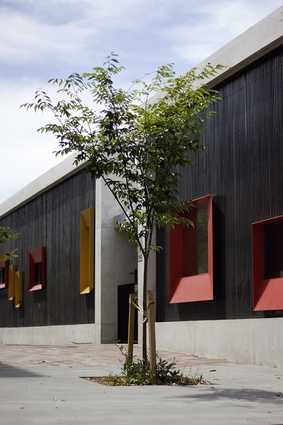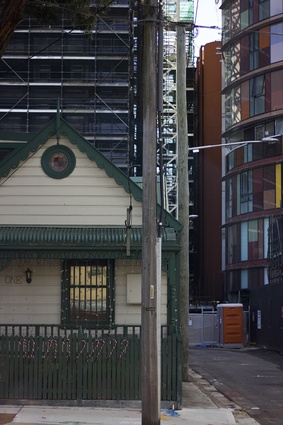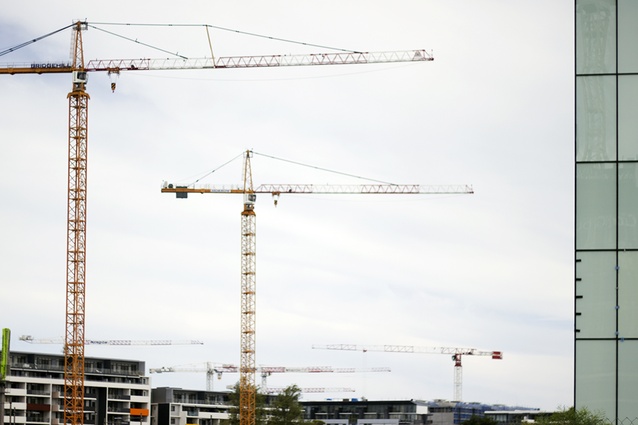Green Square: town of the future?
Graduate architect and educator Nick Sargent writes on a new high-density project taking shape in Sydney, and implications for Auckland.
Although development policy and debate in New Zealand cities is progressing rapidly, in general we are still cautious of high-density living options. However, across the ditch, Sydney – unaffordable and poorly planned as it may be – is emerging as a city to watch.
In parallels with Auckland, Sydney’s housing problems have escalated into political crisis. In response, the NSW state government has committed to building 725,000 new houses by 2036, but, unlike Auckland, these are largely along existing rail corridors and at high density, with some developments at densities more typical of Hong Kong.
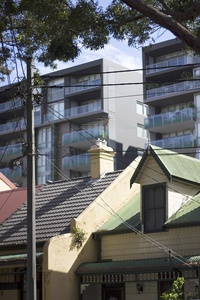
Local reaction is not dissimilar to that in New Zealand and includes fears around a changing urban character (sometimes shaded by xenophobia) and concerns about transparency or who benefits from public-private partnerships. On the positive side, there is admiration for the ambitious scale of building.
After twenty years of planning, a forerunner of this new policy is a project run by the Sydney City Council and the NSW state government’s development department, Landcom. Just five minutes from Central on the Airport line, Green Square Station, still illustrated on tourist maps as a dot in the middle of nowhere, services a new town centre on the edge of the industrial suburb of Alexandria.
The Green Square Town Centre is championed as Sydney City Council’s first new town centre in over 100 years and is expected to house 61,000 people by 2030 at a density of 22,000 per square kilometre.
Currently it is little more than a single street with a colourless new mixed-use development, the Ebsworth, containing a well-stocked loss leader supermarket, a sales office shiftily named ‘The Social Corner’ and some vapid advertising hoardings evoking the transformative potential of art.
But behind the hoardings and marketing noise, some intriguing publicly-funded buildings are near completion and expected to open this year – Green Square is about to reveal the infrastructure that is expected to support its development beyond mere supply of housing.
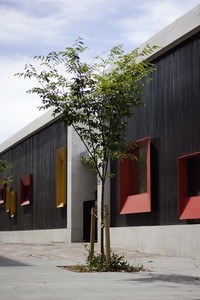
An underground library and plaza (designed by Stewart Hollenstein and Colin Stewart Architects), an attractive refurbishment of the former Esme Cahill Nurses Quarters (The Joynton Avenue Creative Centre by Peter Stutchbury Architects) and the playfully designed Waranara Early Education Centre (Fox Johnston Architects) will open this year.
In 2020, the Gunyama Aquatic and Recreation Centre (Andrew Burges Architects supported by Grimshaw and TCL) will open and looks likely to extend Sydney’s already impressive list of well-designed swimming pool complexes.
Alongside public parks and stormwater upgrades, private mixed-use developments designed by practices like FJMT and Koichi Takada will also soon open, towering over surrounding terrace houses and industrial buildings.
How successful this new infrastructure – and connections to existing infrastructure – will be in supporting 61,000 new residents remains questionable, but the scale and density of development at Green Square is certainly impressive, as is the prolonged political will required to reach this point.
With that comes pressure and significant implications for the delivery of larger future projects, understandably manifest in conservative architectural and planning decisions, that risk missing some of the dynamic, progressive opportunities latent in high density environments.
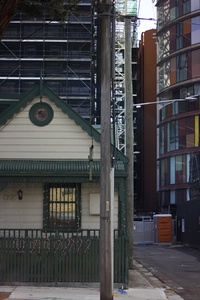
Other early criticisms – insensitivity to heritage and context for example – seem warranted but many others will take more time to assess. Will the development and ownership models serve future citizens well by fostering better modes of living and working that go beyond the mere supply of housing?
Will issues like affordable living (not just apartment cost) and resource efficiency be adequately addressed? Would these issues be better addressed with more distributed solutions, as Auckland is hoping, or is the size and density of development the key to its success?
Whatever the outcome, it is to be hoped that aspects of Green Square, and similar projects in Sydney, might also lend support to braver conversations about urbanisation in New Zealand cities too.
Providing high-density lifestyle options can provide cost savings, dynamism, sociability and resource efficiency that could also bring many benefits to New Zealand shores and help with the housing crisis that both countries currently face.


